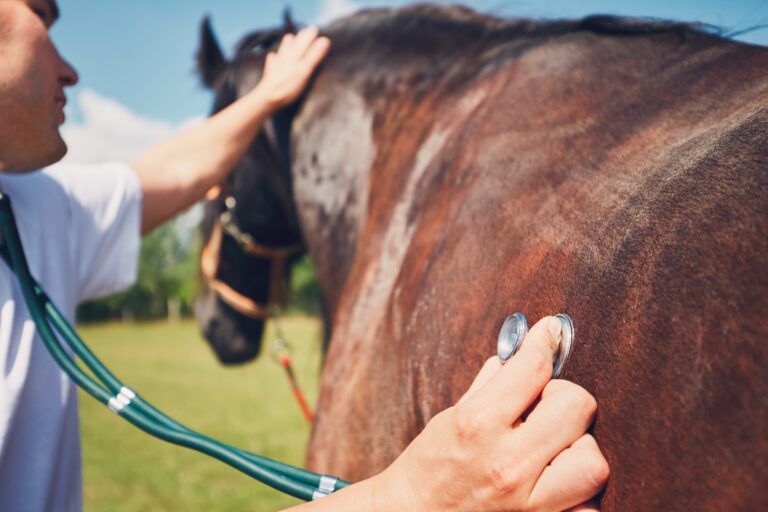Temperature, Pulse, and Respiration: Vital Signs in Horses

Understanding the vital signs of horses is essential for horse owners, veterinarians, and equine enthusiasts to monitor health and detect early signs of illness. The three primary vital signs—temperature, pulse, and respiration—offer critical insights into a horse’s physiological state.
1. Temperature in Horses
Normal Range
- Normal body temperature: 37.2°C to 38.3°C (99°F to 101°F)
Importance
Body temperature reflects the balance between heat production and heat loss. Deviations can indicate fever, infection, inflammation, or environmental stress.
How to Measure
- Use a digital or mercury thermometer.
- Insert gently into the rectum.
- Wait for 30-60 seconds for an accurate reading.
Factors Affecting Temperature
- Exercise
- Ambient temperature
- Stress
- Time of day
2. Pulse (Heart Rate) in Horses
Normal Range
- Resting pulse rate: 28 to 44 beats per minute (bpm)
- Foals have higher rates, around 80 to 120 bpm
Importance
Pulse rate indicates cardiovascular health and can reveal pain, stress, or disease.
How to Measure
- Palpate the facial artery (under the jaw) or the digital artery (near the fetlock).
- Count beats for 15 seconds and multiply by 4.
Factors Affecting Pulse
- Exercise
- Temperature
- Emotional state
- Medications
3. Respiration Rate in Horses
Normal Range
- 8 to 16 breaths per minute at rest
Importance
Respiration rate reflects respiratory and metabolic health.
How to Measure
- Observe flank movements or nostril flaring.
- Count breaths for 30 seconds and multiply by 2.
Factors Affecting Respiration
- Exercise
- Heat
- Stress
- Respiratory illness
Summary Table of Vital Signs
| Vital Sign | Normal Range | Measurement Method | Influencing Factors |
|---|---|---|---|
| Temperature | 37.2°C – 38.3°C | Rectal thermometer | Exercise, environment, stress |
| Pulse | 28 – 44 bpm (adults) | Palpation of facial/digital artery | Exercise, temperature, emotions |
| Respiration | 8 – 16 breaths/min | Observation of flank or nostrils | Exercise, heat, respiratory health |
Frequently Asked Questions (FAQ)
Q1: How often should I check my horse’s vital signs?
- Ideally, daily during routine care or more frequently if the horse is ill.
Q2: What does a high temperature indicate?
- It may suggest fever due to infection, inflammation, or heat stress.
Q3: Can stress affect pulse and respiration?
- Yes, stress can elevate both pulse and respiration rates.
Q4: When should I call a veterinarian?
- If vital signs are consistently outside normal ranges or if the horse shows other signs of illness.
Conclusion
Monitoring temperature, pulse, and respiration is vital for maintaining equine health. Regular checks help detect problems early, ensuring timely veterinary intervention and better outcomes for your horse.
